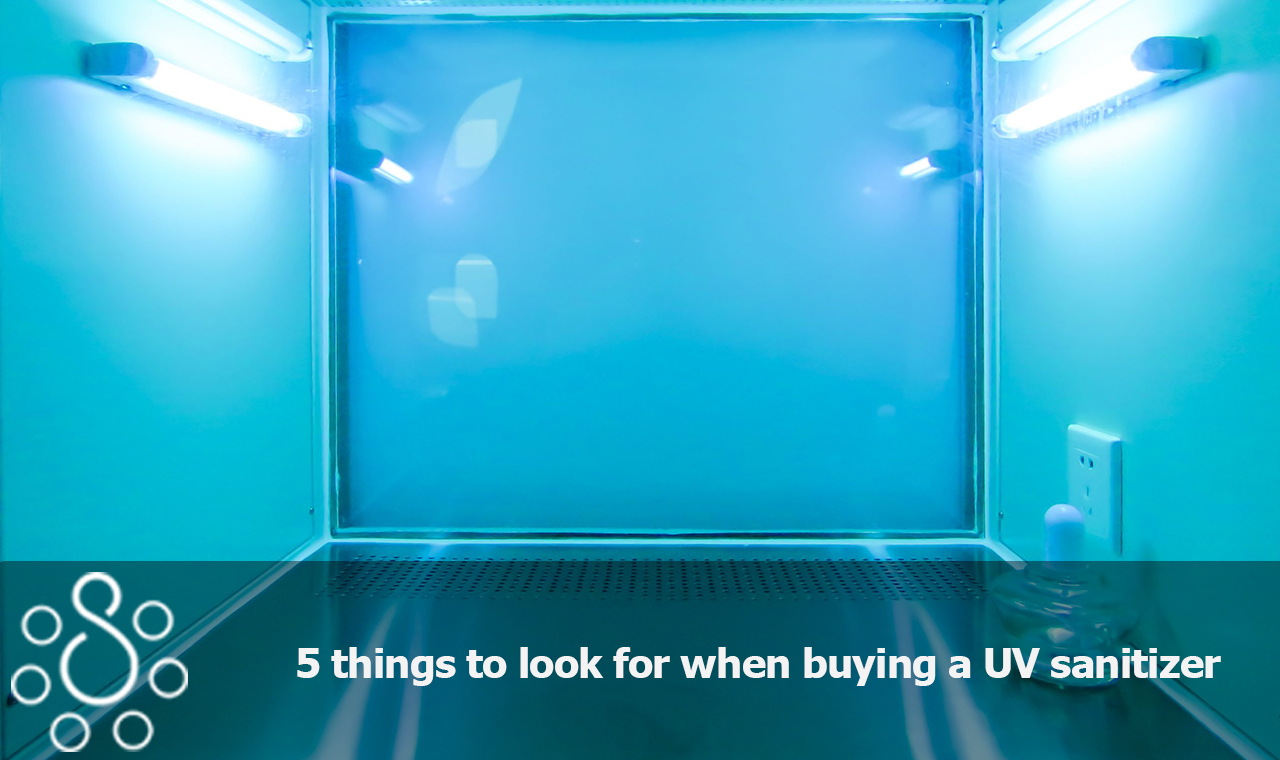In recent years, as a result of the COVID-19 epidemic, there has been an increase in both demand for and availability of ultraviolet-C (UVC) disinfection equipment. Exposure to UVC as a result of improper usage or hazardous sterilizers might result in eye or skin damage. For example, UVC damage to the cornea, which causes burning sensations and increased sensitivity to light, as well as burns that cause redness and peeling of the skin, are all examples of eye and skin injuries. According to the National Environment Agency (NEA), families are advised not to use disinfection sterilizers that utilize ultraviolet C radiation technology. Many of these sterilizers, particularly those sold for home use, are devoid of safety safeguards that protect people from inadvertent or accidental exposure to ultraviolet radiation. The general public is advised to avoid purchasing any UV sanitizer goods that do not have safety safeguards to avoid accidental exposure and health dangers. NEA recommends that UVC-based disinfection should only be used in an industrial or commercial context if sufficient safety features and safe usage practices are in place. Customers who are buying a UV sanitizer for disinfection reasons should only purchase UVC sterilizers that have been appropriately enclosed with safety engineering elements that prevent people from being exposed to the UVC radiation during the disinfection process. The following are examples of safety engineering features:
Portable UVC lamps and desk lights
with safety features such as motion sensors would immediately shut off when a human or animal approached the UVC source. Such safety measures protect the user as well as others in the immediate area from any unintentional exposure to UVC.

- Handheld UVC sterilizers and portable UVC wands with safety features such as gravity sensors would immediately turn off the UVC source when the gadget was raised to the sky. As a result of such safety measures, the user’s eyes are protected from being exposed to UVC radiation. When utilizing such devices, it is important that the UVC light does not shine directly on the user’s skin or eyes.
Related Article: Factors to Consider Before Getting UV Light Room Sanitizers
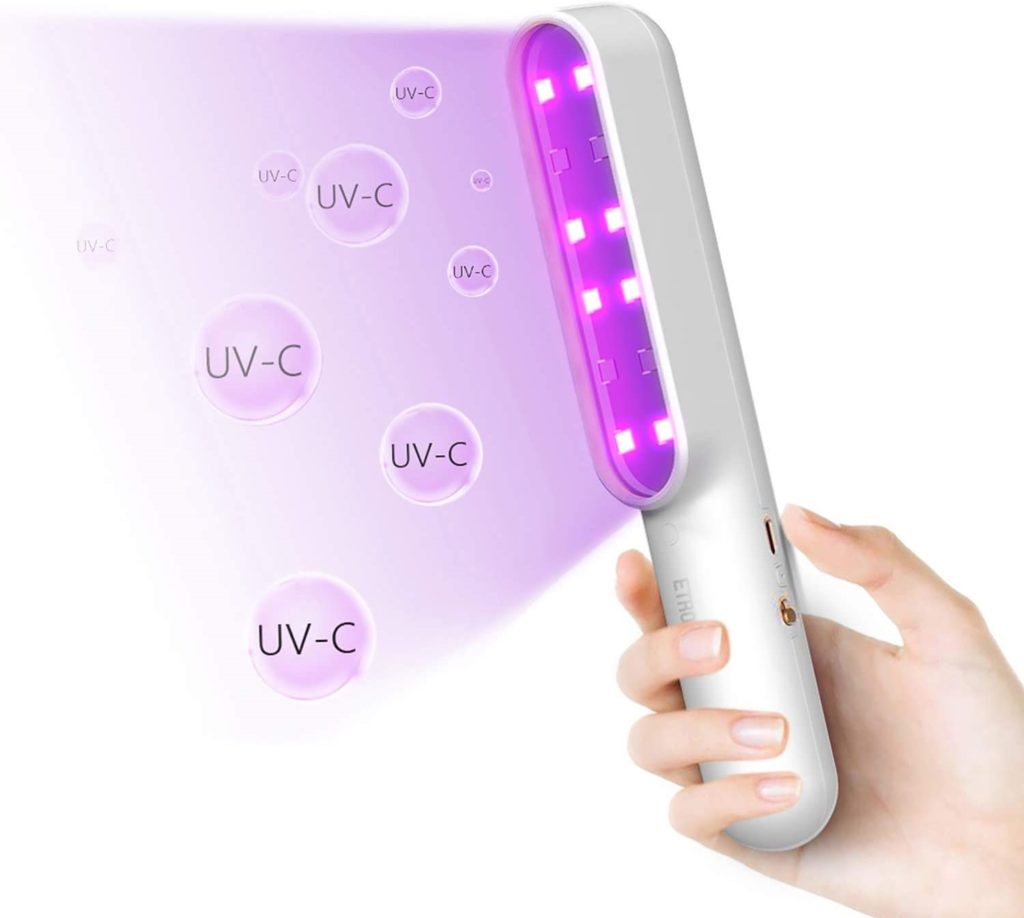
- When it comes to UVC bulbs and tube lamps, safety features such as motion sensors would automatically shut down the UVC source when a person or animal approaches it.

- When using UVC disinfection boxes, there should be safety precautions in place to prevent the UVC light from being activated while the disinfection box is open.
Related Article: Does UV light kill viruses and germs?

The NEA encourages users to avoid direct skin exposure to UVC radiation as well as staring directly into a UVC light source. The NEA recommends that consumers cease using a UV sanitizer immediately if it does not have any of the safety engineering elements listed above. This is particularly important if the device is meant for use on the skin. The NEA has been working with large merchants to aggressively remove listings of UVC sterilizers that are harmful and represent a risk of exposure to UVC radiation from their catalogs and websites.
The FDA has warned all physical retailers and online sales platforms not to sell UVC sterilizer items because they are dangerous to customers. So far, about 8,000 listings for potentially dangerous UV sanitizers have been deleted from online sales sites. While the NEA has made every effort to collaborate with major online sales platform operators in this regard, given the large number of retailers who may advertise on online sales platforms from time to time, the general public is advised to exercise caution and vigilance when buying a UV sanitizer online.
Because of the outbreak of the COVID-19 coronavirus, many individuals are likely to be thinking about sterilization and disinfection right now. Ultraviolet sterilization is a common disinfection procedure that has recently received a great deal of media attention. Given all of the stress and worry, it may be tempting to buy anything you come across, but it is vital that you make an informed choice about what you buy and how you intend to utilize the item. Four critical components of UV-C disinfection are discussed in further detail below.
Make certain that you are buying a UV sanitizer with the correct wavelength
Not all ultraviolet light is created equal, and the wavelength is what separates UV lamps that are effective for disinfection from those that are ineffective. UV-A, UV-B, and UV-C are the three types of ultraviolet radiation classified according to their wavelength values. According to the most recent and comprehensive study on sterilization, UV-C is the only category of UV wavelengths that consistently works for sterilization since it is the only wavelength range capable of direct DNA and RNA destruction. UV-B and UV-A have been used in a number of investigations on certain viruses and bacteria, but the process by which disinfection happens is less well understood and definitive. The vast majority of UV “blacklights” available on the market radiate in the UV-A wavelength range, making them ineffective for sterilizing purposes.
Be wary of products that simply refer to themselves as “ultraviolet” in their marketing, as dishonest sellers may be taking advantage of unsuspecting customers by labeling their UV-A products as “effective for sterilization” and citing smaller and narrower research studies performed on a specific virus strain to suggest that it would also be effective against all viruses, including the COVID-19 coronavirus, which is not true. The ultraviolet C rays, on the other hand, have been found to be effective against a broad variety of viruses, including avian flu, hepatitis A, herpes simplex virus, influenza A, polio, and coronaviruses.
It would be even better if the product you bought included the specific wavelength, measured in nanometers (abbreviated nm), at which the UV radiation is released, so that you could compare it to other products. This is due to the fact that thymine and uracil, the nucleic acids found in DNA and RNA, respectively, are only responsive to a certain wavelength range that has a maximum value of 265 nanometers. As a result, items with wavelengths at or around 265 nanometers are usually the best suitable for sterilization. Although 280 nanometers is a typical wavelength for UV-C LED products, this wavelength is less effective than 270 nanometers when all other factors are equal because it is further away from the 265 nm peak absorption wavelength.
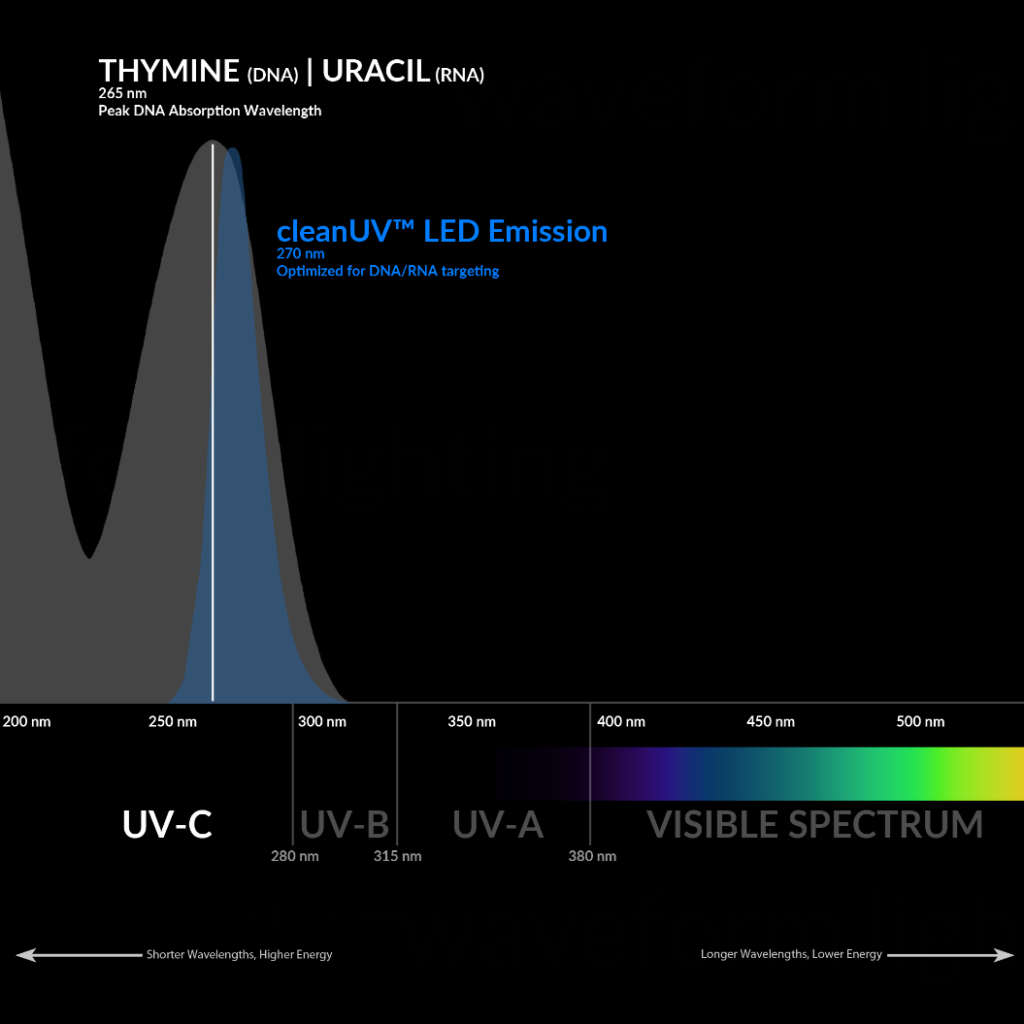
When utilizing UV sanitizer (UV-C), be mindful of the dangers to humans, animals, and materials.
UV-C wavelengths are significantly more potent than other ultraviolet wavelengths. UV-C isn’t found in natural sunlight since it’s shielded by the atmosphere. It’s crucial to remember that UV-C is an artificial sort of radiation that’s more intense than the harmful UV-A and UV-B rays found in natural sunshine.
Human skin may be sunburned by UV-C, which can potentially lead to skin cancer. UV-C radiation should never be exposed to people or animals. Due to the fact that UV-C rays are invisible, there is an increased danger of unintentional exposure. When using UV-C as a sterilizing technique, be extremely cautious to install and set the device in such a manner that people and animals are not exposed, and wear protective clothing if required. (It may help to appreciate the hazards by remembering that welders wear protective clothing because the arc they generate emits UV-C radiation.)
Related Article: Why We Need UV-C Disinfection
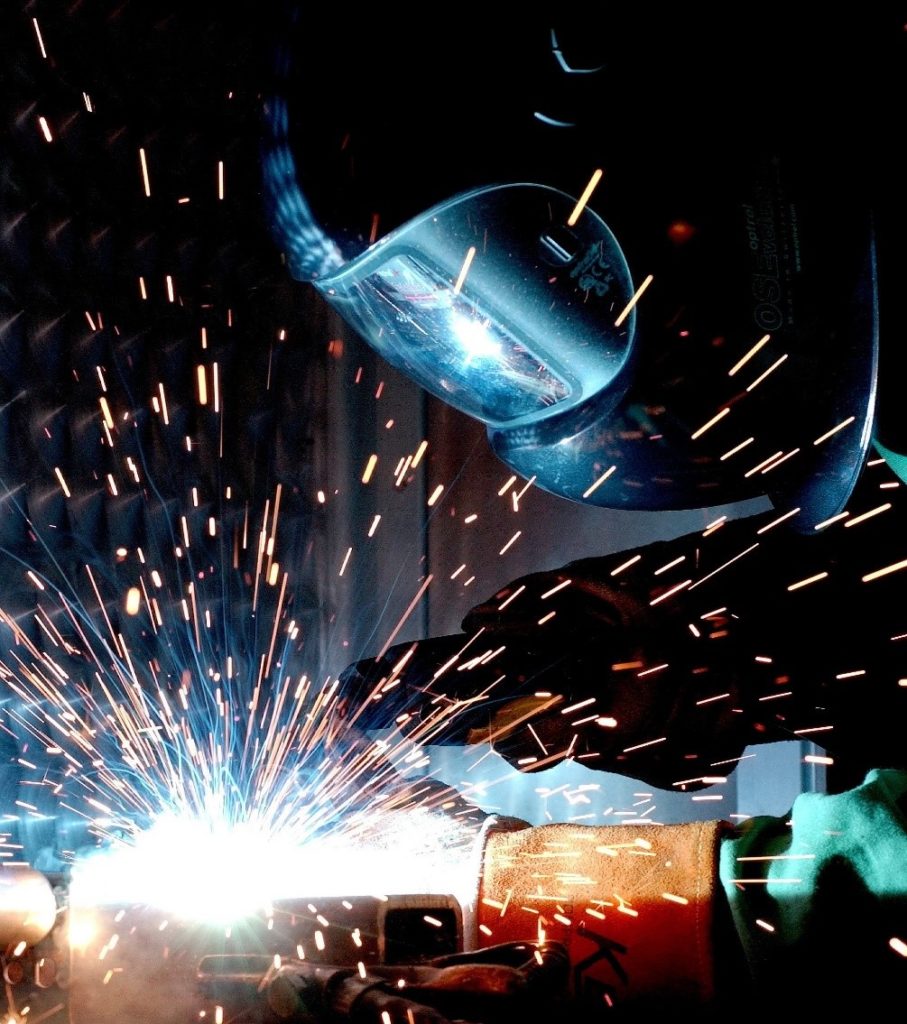
While UV-C poses direct health dangers to people and animals, it may also harm some materials. Plastic and wood are perhaps the most frequent materials that are prone to UV-C deterioration in a medical, business, or residential context. Depending on whether or not UV stabilizers are included in the plastic, it will have varying degrees of resistance. There may be browning, weakening, or brittleness of the polymers. While part of the deterioration may be just cosmetic in nature, certain plastic products may be entirely ruined, posing additional safety issues.
Using UV sanitizer to disinfect N95 masks, for example, may decrease their capacity to adequately filter out airborne germs if exposed for a long period of time. Metals, on the other hand, have been demonstrated to have strong UV-C resistance. Also, keep in mind that UV-C light may harm plants. Indoor houseplants that are exposed to too much UV-C may wilt and die as a consequence of the exposure. Finally, while assessing UV-C safety hazards, we propose taking the overall “dosage” into account. In other words, you should examine not just the UV-C exposure’s instantaneous power and intensity, but also its length, since a low-intensity UV-C lamp exposed for a long period of time may be just as dangerous as a high-intensity UV-C lamp exposed for a short amount of time.
Related Article: Does UV Light Kill Coronavirus?
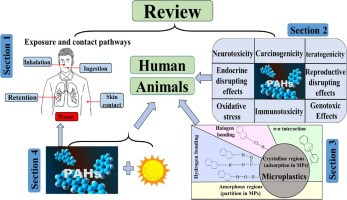
Recognize the UV-C lamp’s limits in terms of disinfecting anything and everything.
Be aware that UV-C lamps are not a magical technology that will completely sterilize any space or location in which they are placed. UV-C radiation must reach a certain surface with sufficient strength for it to act correctly. The inability to reach regions under “UV shadows” is one of the most serious drawbacks of UV sanitizer. UV shadows are places where another item prevents UV rays from reaching the surface. As an example, imagine you’re attempting to disinfect your smartphone using a UV-C light. You’re unlikely to be able to reveal both sides of your smartphone at the same time. You may want to turn your phone over a few times to ensure that both sides are exposed to adequate UV-C for effective cleaning.
Similarly, keeping a UV-C light on in the middle of the room will not allow you to reach every corner and cranny of the space. Will you be able to access the majority of surfaces? Perhaps, but there’s a good chance you missed a few locations where the UV-C couldn’t reach. UV-C photons act similarly to ordinary light in that they will not travel through most materials, even transparent materials like plastic and glass.
Placing a standard A-style light bulb in the position of the UV-C lamp, and visually seeing which surfaces get enough UV-C radiation, is an easy way to identify what regions are in the UV lamp’s “UV shadow.” The shape of a UV-C lamp becomes an important component to consider at this stage. Traditional UV-C lamps are constructed in the fluorescent tube form, which restricts UV-C light dispersion and angles. UV-C has just become available in LED form factors, and flexible UV-C LED strips, for example, may provide substantially greater flexibility and creativity.
UV sanitizer isn’t perfect: disinfection vs. sterilization
You may have noticed that we used the phrases “sterilization” and “disinfection” interchangeably in this blog article. In pure scientific terms, sterilization means there are no germs present, while disinfection means pathogens have been reduced to the point where they are highly unlikely to cause an illness. You might find 99.999 percent efficacy claims on alcohol wipes and other disinfection goods, which means they might miss 0.001% of infections. As a result, they are disinfectants rather than genuine sterilizers in the strictest sense. Also, keep in mind that UV-C is mostly used for disinfection rather than sterilization.
UV-C is a highly efficient approach to lowering pathogen numbers. However, even if properly developed and installed, the ultimate result can only be near-perfect at best. While UV-C may considerably minimize your chance of infection, it’s always a good idea to have numerous layers of protection to come as close to full sterilization as possible. If you’re worried about germs on your smartphone, for example, disinfection wipes should be used first, followed by UV sanitizer to disinfect any spots that the cloth may have missed. Furthermore, even if you clean well, you should not assume that a surface is completely sterile after UV-C treatment.

